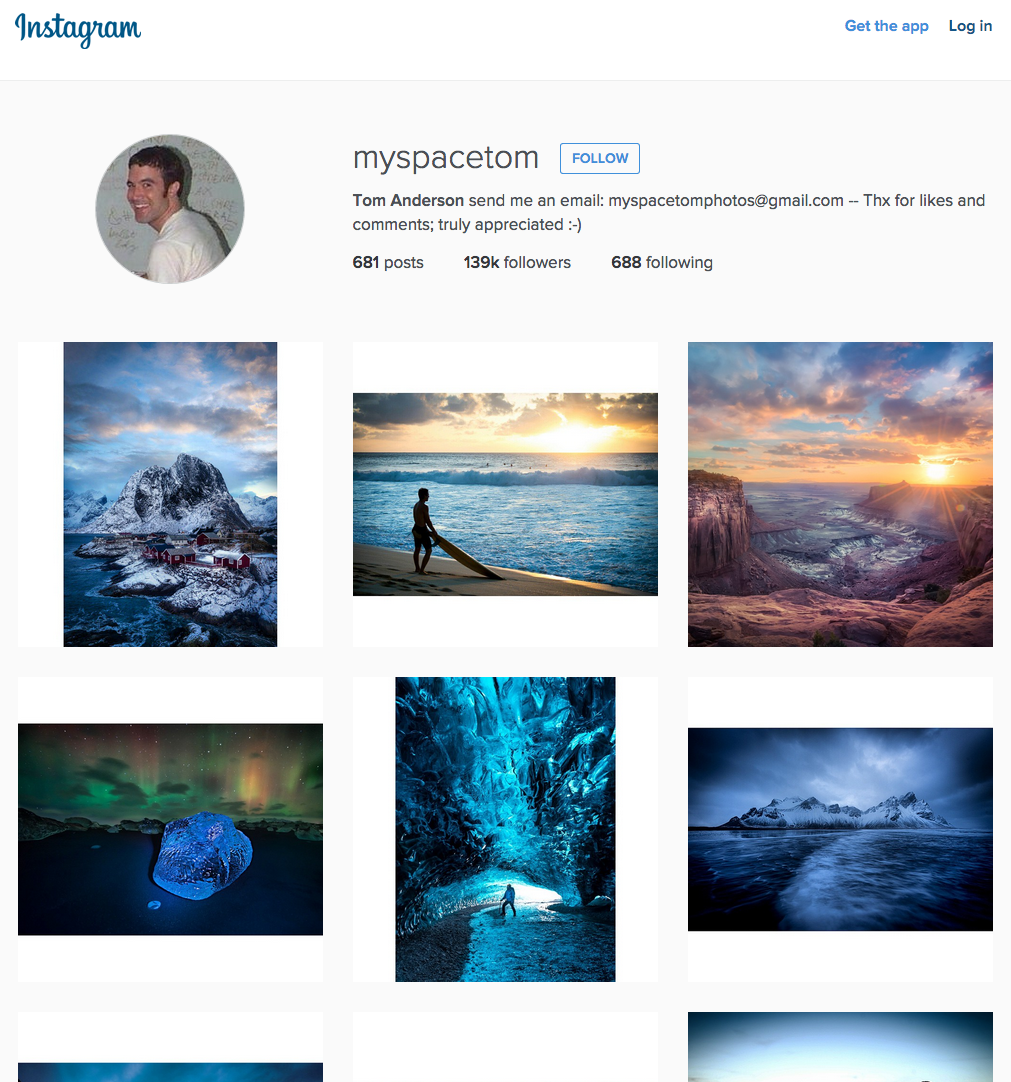Build Instagram: Simple huh!
Your challenge is to build Instagram using Rails. You'll need users who can post pictures, write comments on pictures and like a picture. Style it like Instagram's website (or more awesome).
Bonus if you can add filters!
As an avid photographer
I want to be able to post my pictures on the internet
So that I can share them with the world
As a follower of photography
I want to be able to comment on other users' photos
So that I can let the photographer know my thoughts
As a pedantic follower of photography
I want to be able to edit/delete my comments on other users' photos
So that I can rectify what I originally write
As a photography enthusiast with little time
I want to be able to quickly 'like' other users' photos
So that I can register my appreciation of the photo
As a user who has an account
I want permission to add/edit/delete my photos only when logged into my account
So that I can control my collection
As a forgetful visitor of the site
I want to only be able to 'like' photos once
So that I don't mistakenly tally up the 'likes' of a photo
- Ruby On Rails (full stack, Web application framework)
- Tested using RSpec (provides a behaviour driven development framework for the language, allowing to write application scenarios and test them.)
- Shoulda (Ruby gem for testing)
- Devise (Ruby gem which handles building a user model, routes for your users controller, and also OmniAuth (which handles those 'Log in with Facebook'-type buttons))
- OmniAuth (OmniAuth is a flexible Ruby authentication framework utilizing Rack middleware aimed to abstract away the difficulties of working with various types of authentication providers)
- Poltergeist (headless browser for Capybara based on PhantomJS (scripted, headless browser used for automating web page interaction; provides a JavaScript API enabling automated navigation, screenshots, user behavior and assertions making it a common tool used to run browser-based unit tests in a headless system like a continuous integration environment))
$ gem install rails$ rails --help(provides menu)$ rails new . -d postgresql -Tor$ rails new instagram-challenge -d postgresql -T(instagram-challenge- name of app (use the former method with period if already located in chosen directory, else a new directory with given name will be created);-d- preconfigures app for particular type of database (being overridden to use PostgreSQL);-Tturns off built-inRails test suite to allow RSpec)- Start server:
$ bin/rails serveror (shortcut)$ rails s
- Create databases:
$ bin/rake db:create(or$ bin/rake db:create RAILS_ENV=testand$ bin/rake db:create RAILS_ENV=development)
- Add to test group in
Gemfile:gem 'rspec-rails'andgem 'capybara'and$ bundleto install - Initiate RSpec:
$ bin/rails generate rspec:install(createsspecdirectory withspec_helper.rbandrails_helper.rband.rspecfile) .rspecfile should include:--color--format documentation--require spec_helperspec/rails_helper.rb: add below other require statements:require 'capybara/rails- Add first feature test in
spec/features
config/routes.rbadd:root to: 'photos#index'(orroot 'photos#index') andresources :photos($ bin/rake routesto display different CRUD (create-read-update-delete) routes created)
bin/rails g controller photos- generates aphotos_controller.rbinapp/controllersand rspec test inspec/controllers(delete latter) (g= generate)app/controllers/photos_controller.rb-> defineindexmethod
touch app/views/photos/index.html.erb-> creates index file for controller to reference
- Generate model:
$ bin/rails g model photo descr:string(migration files stored indb/migrate/- version control system that compiles database upon migration)
- Run migration generated by preceding command:
bin/rake db:migrate(or poss.bin/rake db:migrate RAILS_ENV=testandbin/rake db:migrate RAILS_ENV=development)
- Generate migration:
$ bin/rails g migration AddRatingToPhotos rating:integer - Run migration:
$ bin/rake db:migrate
- Add
shouldagem to Gemfile and runbundle install - Add
devisegem to Gemfile and runbundle install; run Devise generator$ bin/rails g devise:install; tell Devise to make user model$ bin/rails g devise User; then$ rake db:migrateto add user table to database.
- Add
omniauth-facebookgem to Gemfile and runbundle install - Add columns 'provider' (string) and 'uid' (string) to your user model:
rails g migration AddColumnsToUsers provider uid; thenrake db:migrateto effect changes - Declare provider in
config/initializers/devise.rb:config.omniauth :facebook, "APP_ID", "APP_SECRET" - Make model (
app/models/user.rb) omniauthable:devise :omniauthable, :omniauth_providers => [:facebook] - See
Github - OmniAuth: Overviewlink below for remaining steps required
- Poltergeist requires PhantomJS - install using Homebrew:
brew install phantomjs - Add
poltergeistgem to Gemfile; runbundle install; require inspec/rails_helper.rb:require 'capybara/poltergeist'Capybara.javascript_driver = :poltergeist
- Add
database_cleanergem to Gemfile; runbundle install; require inspec/rails_helper.rb:require 'support/database_cleaner' - In
spec/rails_helper.rbswitch following line from true to false:config.use_transactional_fixtures = false - Add directory and file:
spec/support/database_cleaner.rb; add to file code from Virtuous Code - Configuring database_cleaner with Rails, RSpec, Capybara, and Selenium or as included in this repo:spec/support/database_cleaner.rb.
- Install ImageMagick (code library that deals with image compression) with Homebrew:
$ brew install imagemagick
- Add
paperclipgem to Gemfile and runbundle install(Paperclip is a gem that makes file uploads to Ruby apps a bit simpler)
- AWS S3 is a cloud server to save image files: add Amazon Web Services (AWS)
'aws-sdk', '< 2.0'gem to Gemfile; runbundle install
-
Try alternate method of RSpec test for successful upload and display of image:
expect(page).to have_css('img[alt="Iceland"]') -
Rectify tests after adding
<%= photo.user.email %>toviews/photos/index.html.erb(all test images must have attributed user else error thrown) -
Check pluralize method is working (in both localhost and testing environment)
-
Validation: image file must be uploaded if photo is being added/updated
-
When editing photo, image file should be included as existing file for given photo
-
Attribute users to comments and likes
-
Add image to photo's profile page
-
Functionality and testing to prevent user from liking same photo more than once
-
Functionality and testing to prevent user from liking their own photo
-
Tests to cover all facets of authentication as per
app/controllers/photos_controller.rbandapp/controllers/comments_controller.rb -
Use partials for:
app/views/photos/new.html.erbandapp/views/photos/edit.html.erb(@photos.errors.any?block is duplicated; possible to use partial for entire form except minor differences of button labels (add / update)?) -
Ability to edit comments w/requisite validation and testing (currently only able to add comments)
-
Apply Ruby 'Time Ago In Words' gem:-
Ruby On Rails - Time Ago In Words gem

